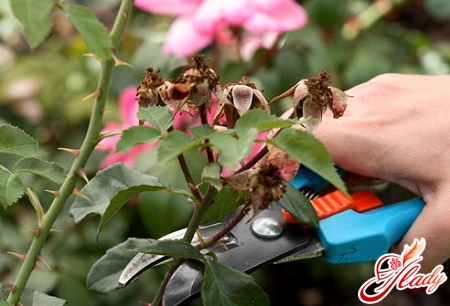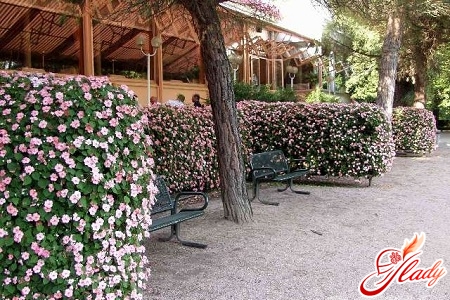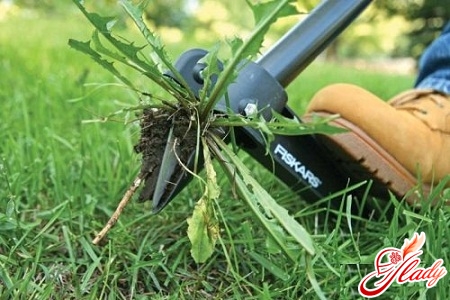 How beautiful these bright mini-roses are, and how fragrant they are!They are simply amazing! And how you want to buy such a miracle and put it on your windowsill! Almost everyone who has ever seen indoor roses at a friend’s or on the counter of a flower shop thinks so. However, having bought a plant, many of us quickly become disappointed because we do not know how to care for an indoor rose. And less than a month passes, and the rose turns into a blackened “stump”. Neither replanting nor fertilizing helps. What’s the catch? How to preserve the plant at home? Caring for an indoor rose is a whole art that needs to be learned. This is exactly what we will do in this article. It is not enough to just visit a store and buy a flower you like. Here it would be right to pay attention to some factors that will affect the future development and growth of the plant. Basically, we choose according to the principle - more buds means better. But this is not entirely correct. Flowers are a matter of acquisition. Pay more attention to the plant itself - the specimen you choose should have young shoots. This means that it is in the growth phase. And adaptation to a new place will be easier. As a result, growing a rose at home will become much easier. But first, you should learn in detail how to properly care for indoor roses.
How beautiful these bright mini-roses are, and how fragrant they are!They are simply amazing! And how you want to buy such a miracle and put it on your windowsill! Almost everyone who has ever seen indoor roses at a friend’s or on the counter of a flower shop thinks so. However, having bought a plant, many of us quickly become disappointed because we do not know how to care for an indoor rose. And less than a month passes, and the rose turns into a blackened “stump”. Neither replanting nor fertilizing helps. What’s the catch? How to preserve the plant at home? Caring for an indoor rose is a whole art that needs to be learned. This is exactly what we will do in this article. It is not enough to just visit a store and buy a flower you like. Here it would be right to pay attention to some factors that will affect the future development and growth of the plant. Basically, we choose according to the principle - more buds means better. But this is not entirely correct. Flowers are a matter of acquisition. Pay more attention to the plant itself - the specimen you choose should have young shoots. This means that it is in the growth phase. And adaptation to a new place will be easier. As a result, growing a rose at home will become much easier. But first, you should learn in detail how to properly care for indoor roses.
The first days in the new conditions
So, the plant has been purchased.Now you will face the question of how to properly transplant an indoor rose. When you get home, do not rush to put it in a new pot right away. Let the flower get used to the climate of your apartment. After a couple of days, it is necessary to carry out pest control. Regular soap foam can help in the fight against them. We take the plant to the bathroom, wash each leaf with soapy water - especially the inner part. Then wash off the foam with running water. You can give the flower a contrast shower. Water it with hot water for about five minutes, then with cool water for the same amount of time. Here we take the rose out of the pot and check the roots. If rotten areas are found, carefully trim them. Healthy roots should be strong and light. After the water procedures are finished, let the rose dry for a couple of hours, and you can transplant it into fresh substrate. Be sure to put drainage on the bottom: comfortable living conditions. This is where you need to start with proper rose care. If you bought a plant planted in peat, then before replanting the rose, you need to completely clean the roots from it. This is necessary so that in the future it will be easier for you to care for the flower. After all, if you simply replant a rose from peat into ordinary soil, then there will be two types of soil in the pot. And this is fraught with several problems at once:
- Firstly, during irrigation, the usual land will be well hydrated, but the roots in the peat coma dry and do not get the right moisture.
- Secondly, you can not keep track of the moment when the plant needs watering. After all, the soil on top will be moist, and the roots at this time will need water.
- And, thirdly, if the plant is transplanted incorrectly - this is fraught with its drying, which adversely affects the indoor rose.
If the plant you purchased containsflowers and buds - pick them off. There are always a lot of them on purchased specimens. And if the rose is young, the flowers will interfere with its proper development. Everything has its time. First, let the branches and roots get stronger, and only then will the flowers appear. After transplanting, it is advisable to water the flower with fertilizer, for example, "Epin", this will help it acclimatize better. Transplanting an indoor rose is an important stage in its further development. Therefore, this procedure should be treated with special attention.
Create optimal conditions
Further cultivation of roses and care for themconsists of several equally important points. And the first of them is never to overheat the plant, even in winter! The rose can tolerate even slight frosts, but not heat. The temperature for proper development should be no more than 25 degrees. It is best to place the plant on a bright window, and to maintain the optimal temperature, especially in hot weather, it is necessary to regularly ventilate the room and cover the flower pot from direct sunlight. The best option would be a western or eastern window. On the south side, neither good watering nor ventilation will save from overheating. The leaves dry out, and the buds fall off without blooming. A southern window is suitable only in the cool season - late autumn and winter. The rose needs to be watered regularly and abundantly. It needs it, like people need air. If you do not look after the rose carefully enough and let the soil dry out, the flower will quickly die. This is especially true during the flowering period. However, do not overdo it. The water in the tray should not stagnate, so after about thirty minutes, the water that the flower did not drink must be drained. In hot weather, watering is done every day. Many gardeners mistakenly think that a rose needs daily spraying of leaves. This is not true. It is enough to give it a shower once a week to get rid of dust. But pests of indoor roses love excessive air humidity. Frequent spraying can lead to the appearance of fungal diseases - so caring, but improper care can even lead to the death of the plant. Indoor roses are very demanding and whimsical, so they definitely need fertilizer. The plant blooms almost all the time, which takes a lot of energy from it, and feeding helps to restore it. From early spring until the frost, the rose must be fed with organic and mineral substances, periodically changing them. It is best to use liquid fertilizer for this purpose, which is sold in flower shops.
Care of the calendar
With the onset of warm days, indoor roses need to betake it out onto an open balcony or into the yard. It feels much better in the fresh air. This has a positive effect on flowering and overall development. When the first buds appear on the plant, it is advisable to cut them off. This will have a positive effect on their further appearance. The rose will bloom more abundantly and longer, until the frost. Flowers that are already fading also need to be removed in time. And it is best to do this when the plant has not yet begun to shed its petals. Periodic pruning of indoor roses is necessary. All withered leaves, dried twigs and other debris should be removed immediately to prevent the occurrence of diseases. When summer comes to an end, make sure that the fertilizer you use for feeding does not contain nitrogen. During this period of time, the rose is preparing for dormancy, and it does not need this substance now. Now it is best to place the flowers on a cool loggia, the air temperature should not be higher than 10 degrees. During the dormant period, which lasts from autumn to winter (from October to February), the leaves of the indoor rose turn yellow. Do not be afraid that the plant is losing its leaves, this is provided by nature, and new leaves will appear in the spring to replace the fallen ones. In February, the rose needs to be prepared for awakening and moved to a warmer room, transplanting it into new soil. If the cold weather is successfully survived, then in March it will give you its first flowers. In order to speed up this process, you need to know how to trim indoor roses. This procedure should be carried out as soon as the first buds appear. It is enough to shorten each branch by one third, and if there are no buds on the shoot, it is cut off completely. Now the plant needs to be well watered and fed and do not forget to ventilate the room. And with the onset of warmth - take it back into the fresh air.
Reproduction at home
Indoor roses reproduce well.cuttings. Let's look at how to do it correctly. The best time to propagate the plant is summer. Cut the cuttings from already faded branches, leaving two or three buds on each of them. It is important to remember that the lower cut should be oblique, and the bud should look up. Make the upper cut straight, slightly above the very first bud. The cuttings take root in water or in a mixture of peat and sand. This should be done as quickly as possible, since even a little drying can lead to negative results in propagation. By the way, cuttings in water have one feature - the water in which you initially placed the cuttings cannot be poured out, even if it has turned green. Just add fresh water as it evaporates. As soon as the roots appear, about 1-2 centimeters, you can start planting. You should plant very carefully - the roots are tender and fragile, they are easy to damage. Next, place the "babies" in a bright room, but not on a windowsill, as direct sunlight can harm them. The cuttings need to be watered regularly as the soil dries. If propagation is successful, then in two weeks the young flowers begin to develop. Cuttings are a great way to grow a rose adapted specifically to your home conditions, which simplifies the care of the plant in the future. After all, a rose is essentially an outdoor flower, and for "home-grown" seedlings, adaptation is no longer required.
How to protect flowers from pests?
Unfortunately, diseases and pests do not bypassindoor roses side. This is especially true for spider mites, aphids and various fungal parasites. The first two are dangerous in the summer, when the plant is outside. You need to constantly check the branches, flowers and leaves in order to have time to take action. So, how to save an indoor rose if it is overcome by pests?
- Aphid. These insects are not so terrible. Especially if you noticed them right away. In this case, you can simply collect pests with your hands. If the situation worsens, use one of the special preparations, for example, "Intavir".
- Spider mite. He is very indifferent to roses and is able to destroy the plant in a few days. The mite entangles the finest spider web and the space between them, as a result of which the leaves of the flower dry and fall off. Buds are also susceptible to attack this pest, because of what they do not have time to blossom. To get rid of the tick you need to spray the plant with "Phyto-farm".
- Rust, powdery mildew, gray mold and othersfungal diseases occur due to excessive humidity. These infections will be correctly prevented, since it is quite difficult to cure them. Do not allow the stagnation of water in the pan, ventilate the room in which the rose lives, do not spray leaves often. If the trouble happens - use "Fundazol".
Treat indoor roses with any of thesepreparations must be applied outside or in a non-residential area. After spraying, the plant is left in the same place for a day, and only then brought into the room. Proper care and maintenance, care and love - that's all your fragrant pets need. And having received all this, Queen Rose will give you flowers truly royally! We advise you to read:









